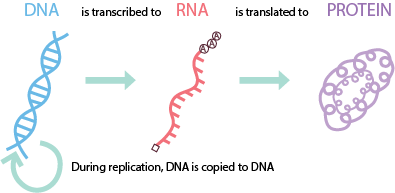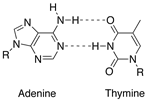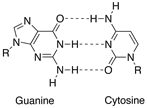

Process of Transcription and Translation: Introduction
DNA is the basic unit of the human genome where a certain piece of DNA encoding a protein of specialized function is called a gene. There are around 25,000 genes in human genome.
To make protein from DNA, there are two main processes, named transcription 轉錄 and translation 轉譯.
- Transcription takes place in the nucleus where genetic information on DNA is copied in mRNA. The key step involves:
- Unzipping the region of DNA to be copied by helicase 螺旋酶
- Formation of mRNA by complementary base pairing of ribonucleotide 核糖核酸 on the DNA template strand
- Reforming of DNA double helix
- Releasing the mRNA strand to the cytoplasm through nuclear pore
The animation of the process of transcription can be seen in this link:
(IE browser is recommended) - Translation takes place in the cytoplasm where polypeptide chain is made from mRNA. The key step involves:
- Attachment of mRNA to a ribosome 核糖體
- Matching of mRNA codon 密碼子 with complementary anticodon 反密碼子 on the tRNA, carrying the corresponding amino acid 氨基酸
- Formation of peptide bond between amino acids, forming a polypeptide chain.
- Reuse of tRNA to carry specific amino acid to mRNA.
The animation of the process of translation can be seen in this link:
(IE browser is recommended)
The way that DNA is transcribed to RNA and RNA is translated to protein is called the central dogma 中心法則. It describes the direction of the flow of genetic information from DNA to RNA to protein.

After revising the process of transcription and translation, let us try to make a protein from DNA in the following activity. >> Hint <<
|
In DNA, the following principle is followed in base pairing: Adenine (A) pairs with thymine (T) with 2 intermolecular hydrogen bonds
NOTE: In RNA, uracil (U) is used instead of Thymine (T) to base pair with adenine (A) |
(*Browser requirement: Internet Explorer, and click " show all contents" )


